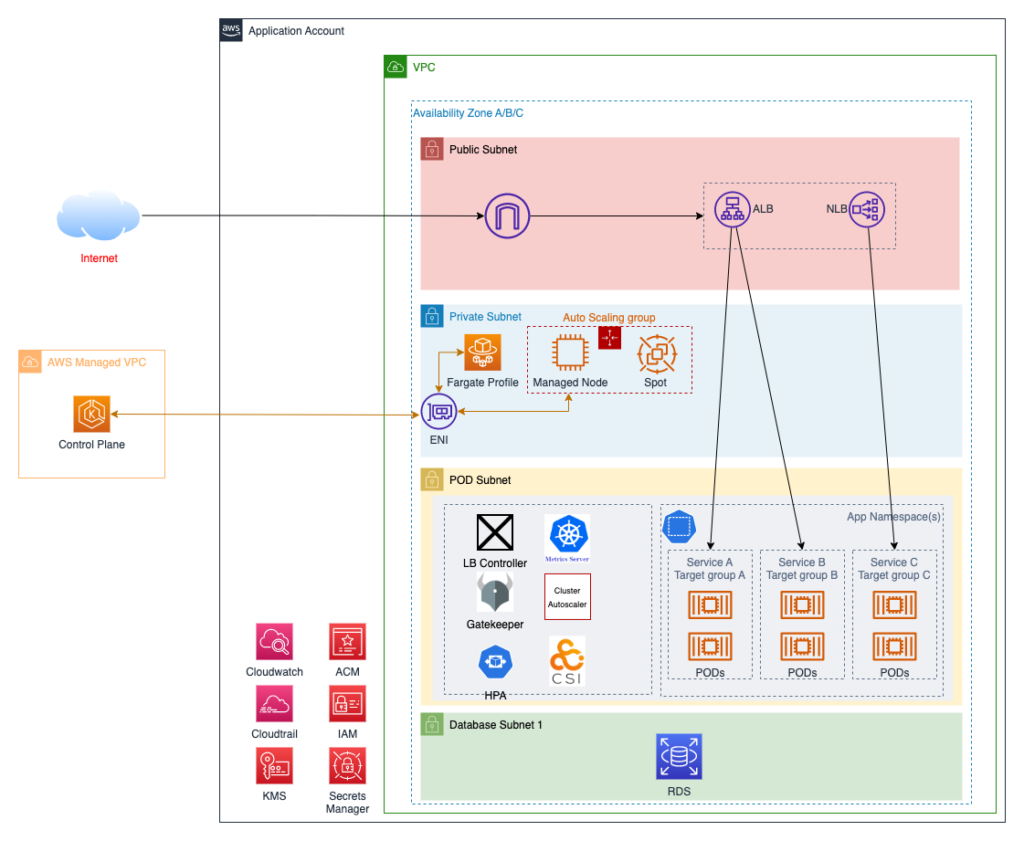Case Study
Monolith to Microservices Migration with Amazon EKSOPPORTUNITY
Micoservices migration with Amazon EKS
In today’s rapidly evolving technological landscape, businesses are constantly seeking ways to improve their software architectures for greater scalability, flexibility, and resilience. One such transformation involves transitioning from a monolithic architecture to a microservices architecture. In this blog post, we will detail how Qualigy Tech aided a major enterprise in their migration journey using Amazon Elastic Kubernetes Service (EKS).
The Medi Group, a multinational corporation with a complex ERP platform, was struggling with its monolithic architecture’s limitations. The platform was becoming increasingly challenging to manage, slowing down deployment cycles, and impeding the introduction of new features. The client realized the need for a more flexible, scalable solution: migrating to a microservices architecture.

The challenge lay in breaking down the monolith into independent, scalable, and easily deployable microservices without disrupting the ongoing operations. In addition, the client required a seamless transition with minimum downtime.
solution
Amazon Elastic Kubernetes Service (EKS) is an excellent choice for managing microservices due to a variety of reasons. Here are some of the key benefits:
Managed Kubernetes
Amazon EKS eliminates the need to install, operate, and maintain your own Kubernetes control plane. This removes a significant burden of ongoing operations and maintenance, freeing your team to focus on developing applications.
Scalability
EKS can easily scale applications based on demand. This is crucial for microservices that might need to handle different loads at different times. EKS handles the orchestration and distribution of these services across your infrastructure.
Security
Amazon EKS integrates with AWS’ security and identity services, such as IAM and Amazon VPC, to provide robust security features. You can control network access to your Kubernetes applications and use AWS IAM roles for service accounts for fine-grained access control to AWS resources.
Reliability
EKS runs the Kubernetes management infrastructure across multiple AWS Availability Zones, automatically detecting and replacing unhealthy control plane nodes, and providing on-demand, zero downtime upgrades and patching.
Integration with AWS services
EKS integrates well with other AWS services, like Amazon RDS, AWS Fargate, Amazon S3, and AWS Lambda, Application Load Balancer as Ingress Controller etc.
Monitoring and diagnostics
Amazon EKS integrates with third-party monitoring tools to improve monitoring and observability. This helps in troubleshooting any issues that may arise in your microservices, enhancing the overall reliability of your applications.
These features make Amazon EKS a powerful platform for running containerized microservices, making it a comprehensive solution for businesses looking to migrate to a microservices architecture.
approach
Step 1: Analysis & Planning
Our first step was a thorough analysis of the existing monolithic application. We identified distinct functionalities that could be broken down into individual microservices.
Step 2: Microservices Design & Containerization
Once we had the microservices blueprint, our team of experts designed and developed these microservices in line with best practices. Each microservice was then containerized using Docker.
Step 3: Setting Up Amazon EKS
Our AWS-certified DevSecOps engineers worked on setting up the EKS cluster. Qualigy Tech team used Terraform to automate setting up the EKS platform and the add-ons.
Step 4: Deploying Microservices on EKS
With the EKS cluster ready, Qualiy Tech team deployed the microservices onto the EKS cluster using Helm package manager. A Continuous Deployment (CD) pipeline was created to build, test and deploy the latest code to the EKS cluster.
Step 5: Testing and Transition
The new microservices architecture underwent rigorous testing for performance, reliability, and security. Only after successful validation, we began the process of transition, which was performed in a phased manner to minimize any potential disruptions.
Outcome
Thanks to the successful migration to a microservices architecture on Amazon EKS, the client experienced a significant improvement in their deployment cycles. They also reported increased application resilience and a smoother user experience, contributing to an overall boost in their customer satisfaction.
The process highlighted the immense potential of microservices when paired with a robust platform like Amazon EKS. With our expertise in cloud technologies and software architecture, we were able to provide the client with a solution that not only met but exceeded their expectations, paving the way for their continued growth and success in the digital space.
About the Medi Group
Are you considering a similar transformation? Our team is ready to help guide you through the process. Contact us today to learn more.
